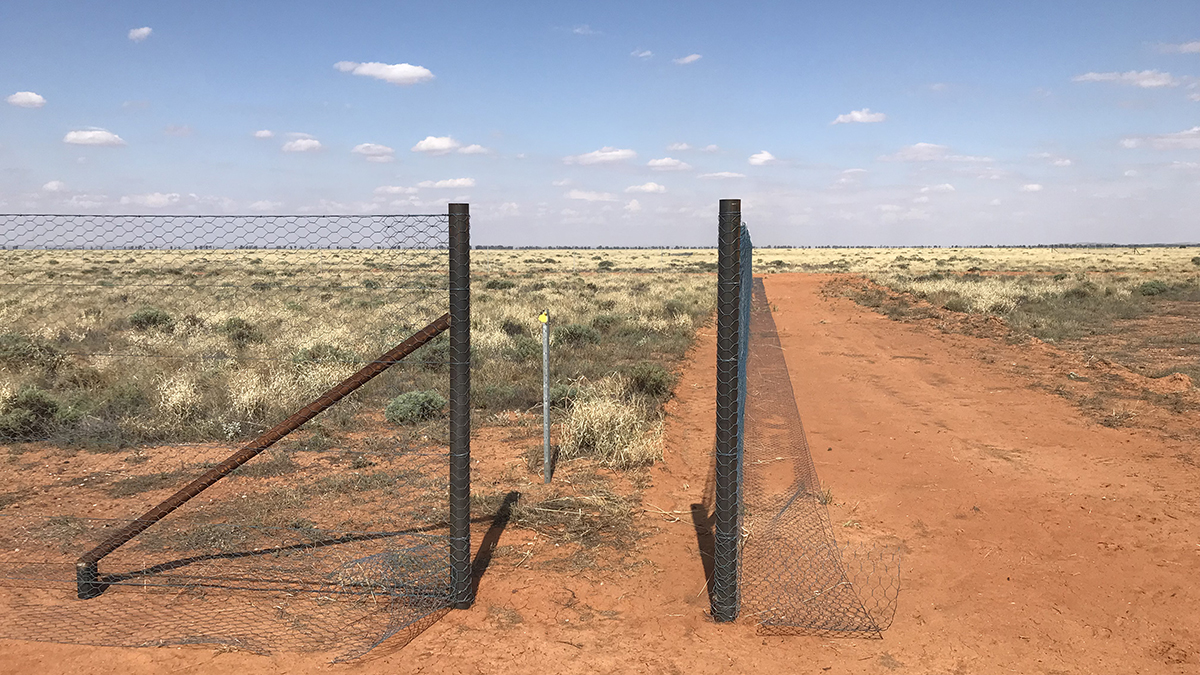
Work is almost complete on conservation fencing to protect the arid research station.
Fowlers Gap is an extensive arid area of NSW with a rich cultural and environmental history, supported by almost 60 years of UNSW research. It is one of the University’s most important assets, providing opportunities for implementing research findings with regional, national and international impact.
In 2022, UNSW announced – after more than 150 years of agricultural land use – it would restore the Fowlers Gap Arid Zone Research Station in the far west outback of NSW into a dedicated site for conservation and restoration. To support this new phase, in November 2023 a new project commenced to install conservation fencing to protect native fauna and flora and reduce over-grazing to enable natural habitats to regenerate.
Associate Professor Hedley Grantham, Director (Research) at Fowlers Gap Arid Zone Research Station, has been involved with the project from the outset.
“The new exclosures [to keep animals out] are a unique, globally significant long-term experiment into arid zone ecosystem recovery,” he says.
“These exclosures mark a crucial step forward in our understanding, management and preservation of these ecosystems.
“The exclosures serve as living laboratories, offering invaluable insights into the resilience and dynamics of arid zone biodiversity. By fencing off these areas, we can study the effects of grazing, invasive species, climate change and other factors with unprecedented precision.”
Protecting native flora and fauna
A primary research goal for Professor Mike Letnic from the School of Biological, Earth & Environmental Sciences (BEES) is to tackle the grand challenge of biodiversity conservation in a world with an ever-expanding human footprint. An example of this is the animals of Australia’s arid regions that have been devastated by the introduction of red foxes and feral cats.
“Many of our native mammals have become extinct or endangered because they can’t effectively avoid these predators. Similarly, many of Australia’s ground-nesting birds such as the plains-wanderer have declined because they are easy prey for foxes and cats,” says Prof. Letnic.
“The fenced areas at Fowlers Gap will provide refuge for native mammals and ground-nesting birds from predators, and will also provide animals and plants with refuge from over-abundant herbivores such as feral goats whose grazing degrades their habitat.
“We expect in the coming years that populations of endangered animals, such as the plains mouse that was thought to be extinct in NSW until it was rediscovered at Fowlers Gap, will thrive inside the fenced areas.”
This project targets two ecosystems typical of Fowlers Gap, hills and plains areas. In these ecosystems two different scales of exclosures are being tested, with a focus on the effects of rabbits, goats, kangaroos and invasive predators such as foxes and cats. In addition, the main water points at the station will be fenced to limit water access to large herbivores with the aim of reducing the number of kangaroos and goats.
The installation of the conservation fencing is expected to be complete by May 2024. The research will last a minimum of 15 years and has the potential to answer questions about rangeland management and fencing options for the grassland of western NSW.
To find out more about this project, please contact Dr Keith Leggett, Fowlers Gap Arid Zone Research Station: k.leggett@unsw.edu.au.
- Log in to post comments
